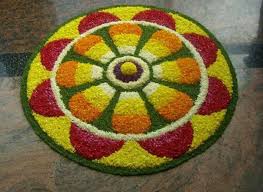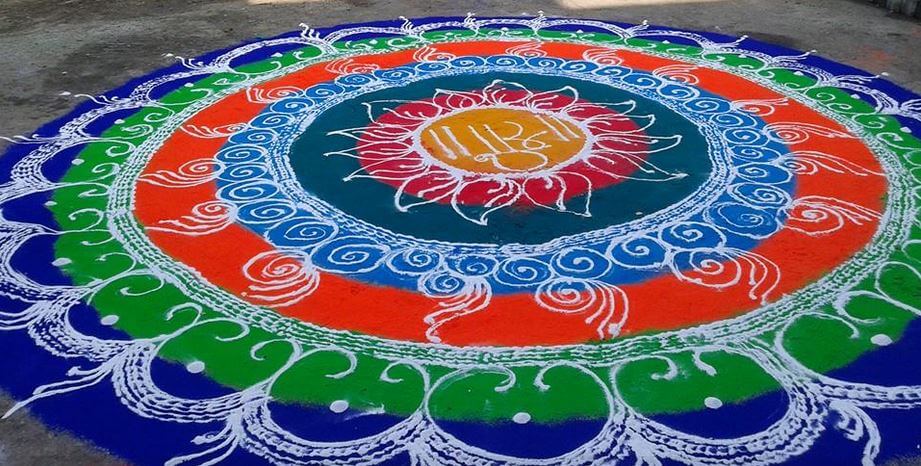Rangoli is derived from a Sanskrit word ‘rangavalli’. In other parts of the world, there are different names for Rangoli. In Tamil Nadu, it is called Kolam, in Bengal, it is called Alpana, in Rajasthan, and it is called Madana, and so on. It means a row of colors or layer of colors.
It is a traditional form of art where women’s decorate the entrance of their houses with colorful patterns and symbols. It is a form of welcoming guests and different deities into the house.
As it is said ‘Athithi Devo Bhava’, which simply means that guests are a form of God, so everyone should treat them with hospitality. It is a custom to draw rangoli at the site of any auspicious religious ritual like Diwali, wedding, ritualistic worship etc.
Rangoli Design

How is Rangoli made?
A pinch of rangoli powder is taken using the index finger and thumb. As the rangoli is a coarse powder of special soft white stone, it can flow freely when slowly released from the pinch of index finger and thumb.
To make a rangoli on the floor, following steps are used –
a) The surface on which the rangoli is to be drawn is prepared by cleaning it thoroughly. Traditionally, the surface was smeared with cow dung, and after it dried, rangoli was drawn on it at specific locations. In the ancient times, it was a practice to daily sweep and sprinkle every doorstep with cow dung and draws rangoli.
b) A design or auspicious symbols or signs are selected for drawing.
c) After the selection, the required numbers of points are created on the floor using the rangoli.
d) Then these points are joined with the appropriate design shapes, lines, curves, etc.

Types of Rangoli
1. There are mainly two types of rangoli:
a) Dominant form: Lines, cones and circles are drawn in this type of rangoli.
b) Ornamental: In this type birds, flowers, animals, leaves, trees are given more importance.

2. A coonch, swastik, moon, sun.

3. Two parallel lines of rangoli are drawn. In the middle of the lines, two curved lines are drawn so as to create a chain. This chain represents a serpent couple.
4. The eight petals represent the universe with eight directions, as well as the sun and Deity Vishnu. The lotus is symbolic of Goddess Lakshmi as well as the energy for procreation, so it is given special importance in the worship of Deity Vishnu.

5. Another type of rangoli is drawn with the help of dots. First, the dots are made on the ground and then vertical and transverse lines are drawn joining these dots so as to create various figures such as a peacock, a tortoise, a lotus, a creeper, etc. Though this rangoli with dots is complicated, it is attractive.




